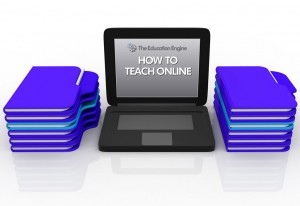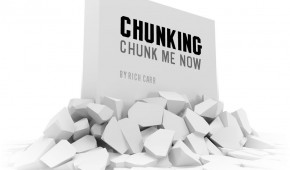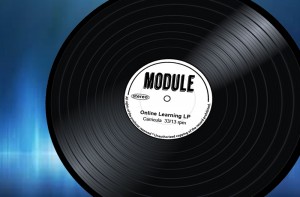31st December, 1969
HOW TO TEACH ONLINE
3rd February, 2017

You’ve got a skill. You know somebody else would love to learn that skill. Now what?
Let’s first NOT assume you need a classroom, classmates, discussion groups or any other preconceived notion of equating ‘teaching’ with ‘a group of people’...regardless of how you were raised and educated. Instead, let’s consider what happens in education today when you REALLY need to understand something. You get a Tutor and for some intense one-on-one learning. No classmates, no videos of some guy teaching something somewhere in some classroom to a bunch of someones. We’re not reinventing the schools we attended. We’re teaching online.
Paradigm about to shift...
Teaching online has gone through a wild ride for K-12 and College courses. The models they work under still maintain that ‘group’ behavior and, by their own admission, the MOOC model has been less than successful when looking at percentage of completion of courses and the actual transfer of knowledge.
But what about teaching something that isn’t a course on world history, or pre-calculus, or the psychology of crowd control? What if the skill you want to teach is for small & medium business owners on how to write better advertising? What if you’re a restaurant owner and need to teach new hires everything from Safety in your workplace to how to cook your signature dishes? What about all the things that need to be taught, but not in ‘school’ as we all know it?
Teaching a skill or way of doing things online is becoming increasingly easier as the barrier to getting your knowledge into a form that teaches is also becoming easier. You simply need to get your subject into a logical, progressive order and truly understand what items are essential to learning your subject.
Let’s dissect that for a moment...
What you’re going to teach can easily be defined by having you answer this question: When a person takes my class they’ll learn how to _________. You fill in that blank.
As an example, let’s say you wanted to teach ‘How To Teach Online’. As with any new skillset, there are several things that must be available to assure the desired outcome. Similar to a recipe, you’ve got ingredients that need to come together at a precise measurement and at a precise time.
To teach How To Teach Online we first set expectations; In this course you will learn how to outline your skill into its most important elements (Chapters) and what items are essential to each of those elements (Chapter Content). You’ll want to confirm with each student that they actually did learn what you were instructing (Questions). You’ll also want to demonstrate examples online to support your subject and its outcome throughout. This can be through Video, Text, Graphics, Downloads all strategically placed within your course on teaching online to assure the student has them readily available and understood.
‘How To Teach Online’ now has structure.
Title:
HOW TO TEACH ONLINE
Chapters:
1) Manage Expectations
2) Chunking: Developing Course Chapters
3) Chapter Content & Quizzing
4) Interactivity: The Secret Ingredient
5) How Much Control Do You Want or Don’t Want?
6) Communicating With Students
7) Course Completion
Technologies like The Education Engine were designed for teaching like this. To take your ideas and knowledge and power them with a suite of easy to use tools that require you to only copy, paste, point and click your way to course development. The above seven Chapters of our course now have structure that needs content to support it.
Content is not daunting, it just needs order. To continue this example, we’ll now take Chapter One in How To Teach Online and break it down into its essential content.
1) Manage Expectations
To use my own advice, I’m going to look at this Chapter and include content that will support it. The main point I want to get across is what will happen when you take this course. The name of the course tells that story, but in this first Chapter I want to spell it out so that the student really understands what they’re gaining by completing the course.
a. Seven Chapters, each based on Mastery Learning, designed to take your thought of teaching online and turning it into an actual online course.
b. Each Chapter broken down into small discrete lessons that follow a logical progression.
c. In order to demonstrate mastery over each lesson, students must be able to overtly show evidence of understanding the material before moving to the next lesson or chapter.
d. Upon successful completion of this course, each student publishes their course online.
Chapter One is becoming pretty clear. This course is not only going to teach me how to teach online, but tells me how this is going to happen AND at the end actually makes it happen. Expectations managed. Do this exercise for each of the seven Chapters in this course and you can easily see how ‘content happens’ and becomes organized.
By now you’re seeing the simple order elements needed to take your course live. You take big things, turn them into little things, and little things you turn into interactivity. Without over-simplifying this, we’d do the same exercise to each of the four letters representing Chapter Content above.
Because The Education Engine was built specifically for one-on-one learning, for business, for the professional, for the hobbyist, for anybody wanting to transfer their knowledge - as well as get paid for it -let’s take the fear or expensive of technology out of the equation. It’s all there for you ready for you to ‘add content’. Given this, let’s add content to item ‘a’ above.
1) Seven Chapters...
a. List the seven Chapters and what they’ll gain from each one
b. Give Video examples of each Chapter online in other courses as example
c. Give a download Quick Reference Guide for use in future Chapters
d. Show, graphically, online course structure
e. Ask questions to get them used to interactivity
i. Chapter One is called (fill in the blank) Expectations
ii. In the video above which is correct?
1. You should force a student to answer correctly before proceeding
2. The answer is ‘hidden’ in the image mouse-over
3. OPEN ENDED QUESTION: In 1,000 words or less, tell me the idea you have for teaching online.
This pattern of taking Chapter Content and further Chunking it into smaller bite-sized pieces is the secret to online learning. From assuring comprehension to moving onto the next chapter, your students achieve comprehension through Mastery Learning. In Mastery learning, the students are helped to master each learning unit before proceeding to a more advanced learning task in contrast to ‘conventional instruction’...lectures you watch in a group setting and try to absorb.
You can also see that teaching online isn’t something you can whip out in an hour or two. It takes planning and preparation, and that takes time.
To state that the above is an over-simplification of teaching online would be accurate as well as the desired effect of this article. Like teaching a course online, the goal of this read was to bring you out of the noise of minutia & opinion offering you a view of the process from 30,000 feet. Its cliche, but your skill has an audience just waiting for what you’ve got. A simple search will prove that immediately. The point was to get you to take action on your idea and start teaching online immediately. It’s time to click or get off the pot.
If you’ve already done your planning and preparation, then the only thing holding you back is putting it into a platform you can invite people to learn from. For people and business who have many courses to teach, The Education Engine was made specifically for you. If you have one class you want to get online, The Education Engine is your answer.
31st December, 1969
CHUNKING
3rd February, 2017

If a teacher lectured in the classroom, would anybody learn?
If you were to look at all the news that surrounds MOOCs (Massive Open Online Courses) you’d see an industry struggling to take advantage of the internet. We’ve seen this before, but this time it’s fascinating... it involves everybody from you to your kids and you barely even know it yet. The radio industry painfully tried to position itself against the Internet throughout the 90s rather than embrace it. They paid dearly on the dial and continue to because of failing to see the ‘other’ right answer. Chunking.
The issue at hand is not MOOCs per se, but more the manner in which they approach Online Education. Far too often, they’re calling ‘Streaming Lectures’ Online Education. Take that same experience ‘as if’ you were in the classroom and stream it online. Did that work for you? Sitting in a lecture for 50 minutes, write some notes, circle back next week with a brief review is all you need to learn right? Wrong.
Online Education is far different than the radio industry when it comes to the ‘customer’. In radio, it’s a consumer. With Education your customer is the student. MOOCs are treating customers like consumers. Bad MOOCs.
HOMESCHOOLERS ARE CHUNKERS
Education has been using the same model - schedule the whole day, section it into hours, section hours into classes, fill an hour with a class, repeat - for far too long. Alternate models of Education, such as Homeschooling, continue to turn out a smarter individual even when actual ‘learning time’ is vastly reduced from the Public School model. Great teachers are shackled by this model, get frustrated, and discover Homeschool.
The Home School Legal Defense Association (HSLDA) commissioned a study drawing data for the 2007-2008 school year from multiple standardized testing services. Once again, the national average percentile scores were higher in all subject areas by at least 34 percentile points, and as high as 39 percentile points. Factors such as parental college degrees, how much parents spent on education, level of state regulation, and sex of the students made little difference in the range of scores in all areas among the homeschooled children.
Homeschoolers, whether they know it or not, practice the art of “Chunking” education. Educational Chunking, is the savvy of taking a large piece of information and breaking it down to palatable portions for the student. That 45-minute lecture? Not today. Not anymore.
WHY WE CHUNK
We chunk because we have to. I could point at nearly anybody, anywhere, with their face firmly planted in the screen of their mobile device. If I then said, “Now, on average how long do each of them stay focused on one thing while interacting with that screen?” How long does a person stay with one item on the screen? 8 SECONDS!
According to the National Center for Biotechnology Information, research from January of 2014 says the average attention span is 8 seconds. In Bull Riding that makes you money. In education that causes ulcers. Unless, that is, you realize what you thought was once fancy is rooted in scientific fact: Our short attention spans are getting shorter. The average attention span of a goldfish (from the same study) is 9 seconds. A goldfish has a better attention span than you do. This is why we chunk.
Chunking is no new idea either. George A. Miller’s famous 1956 paper, “The Magical Number Seven, Plus Or Minus Two: Some Limits on our Capacity for Processing Information”, basically stating that breaking a big item into several smaller items within a group increases retention. Chunking is used in motor learning, memory training systems, Expertise and Skilled Memory Effects, Short Term Memory, and Long-Term Memory structures.
WHO SHOULD CHUNK
Anybody who wants to educate. This requires carefully examining the manner in which students will experience new content. If you were looking for loftier words with intricate meanings you won’t get it here. No words wasted.
31st December, 1969
LEARNING BY TRACKS NOT ALBUMS
3rd February, 2017

Growing up a child of the 60s and 70s, the “LP” - Long Play or Album - was the coveted status symbol of the ages. We listened to each side starting with the first track and let that needle glide across that black vinyl at 33 1/3 rotations per minute and we loved every scratchy groove.
Segue to modern day and, while still an audiophile, music and it’s availability to purchase just a track, and not the LP, is not only the standard, it’s the preferred. Consumers have a choice between the LP and the track. The track is winning hands down.
What if Education could be consumed this way? Learning tracks, or modules, versus having to take a Semester of everything that surrounds that module you’re actually interested in or that could advance your career by learning this one thing.
In a fascinating institutional report entitled “Future of MIT Education” <http://web.mit.edu/future-report/TaskForceFinal_July28.pdf> we see the very entity credited with starting online learning is thinking this way too. The early Massive Open Online Education (MOOC) experiments of replicating the classroom experience have yielded unsatisfactory results with deplorable completion rates as low as 3.2 percent of the students that Enroll.
MIT’s draws a line in the sand with online learning by concluding “The very notion of a ‘class’ may be outdated.”
Modularity then becomes the ‘chunking’ <http://carrknowledge.com/article/2014/4/chunking-the-modern-classroom.html> as we reported in April, is simply taking a course, or subject, then defining and focusing on its parts versus the whole. Rather than assigning three months of English, five modules would be chunked into “Verbs, Adjectives, & Nouns”, “Sentence Structure”, “Poetry”, “Elements Of Style”, and “Writing To The Audience.”
Web Start-Up CARRICULA <http://carricula.com> has taken the online classroom away and presents a ‘one-on-one’ experience for the student by taking this ‘MIT Modular’ approach to online learning. Soft launching with a curated cadre of Instructors that boast Wall Street Journal & New York Times Best-Sellers and James Beard Winners more than a PHD in Education, Carricula’s course presentation is completely modular. Instructors can even embed their Classes and Courses in their own website, much like a YouTube video, but the entire course - from Enrollment through Chapters, Pages, Quizzes, Video, Testing, even online interaction together with the Instructor. Functionality like this has Instructors from every industry - Creative Writing to Online Marketing - utilizing online learning & development platforms like Carricula. Carricula further gives this technology to Instructors collecting commission only when an Enrollment is paid for online.
Carricula is powered by The Education Engine.
31st December, 1969
MARKETERS ARE BETTER TEACHERS
3rd February, 2017

Marketers are better Teachers. Fightin’ words? Absolutely. Not.
Having great respect for the professions of both the Teacher and the Marketer - my wife is a teacher and I’m a marketer - we naturally fall into conversations how to better deliver a message. While we both have a process that we define, control and measure, only the marketer has the ability to optimize and improve ‘on the fly’.
A better subject would have been ‘Marketers Have More Freedom Than Teachers To Deliver There Message & Optimize Approach For Constant Improvement. Forever’
Delivering a message, and more importantly making sure that message’s intent was understood and taken action upon, is the marketers goal. That goal, if met or surpassed, is often rewarded in kind. Meaning the better results, the better the pay day. Marketers find the ‘hot spot’ and deliver that message until the message no longer pays off.
What if Teachers could operate that way?
Teacher sees through test results that the class is not understanding a certain lesson. Regardless of the efforts put forth, this class is not having any of this. There are a few individuals who show promise, a few totally disconnected, with the majority staring blankly at mobile phones, space, the wall, or the doodled Python on the desktop. Rather than follow state-mandated curriculum and process, Teacher tells some kids to come in early, some late, some whenever and choose the parts of this lesson that they’re most interested in. They can do the module right there on their mobile phones. Teacher can intervene if there’s a need. All scoring is on the Teachers desktop. Blended learning. One-On-One instruction when the student is receptive.
The Education Engine was developed for Teachers, Marketers, Business, Organizations - in short, any entity needing to keep their workforce, audience, class, customer base, volunteers on the same page. Repeatedly. Forever. As Human Resource tool its functionality is invaluable giving access to instruction from anywhere that is controlled, analyzed, optimized and improved upon when you need it. Instantly delivered online from anywhere.
Marketers and Teachers best exemplify the needs The Education Engine fulfills. Delivering a message that is understood, acted upon, and measured.
When this paradigm is understood, you can see applications in any situation where a knowledge is transferred and needs to be transferred repeatedly. The barriars to distribution have been broken.






